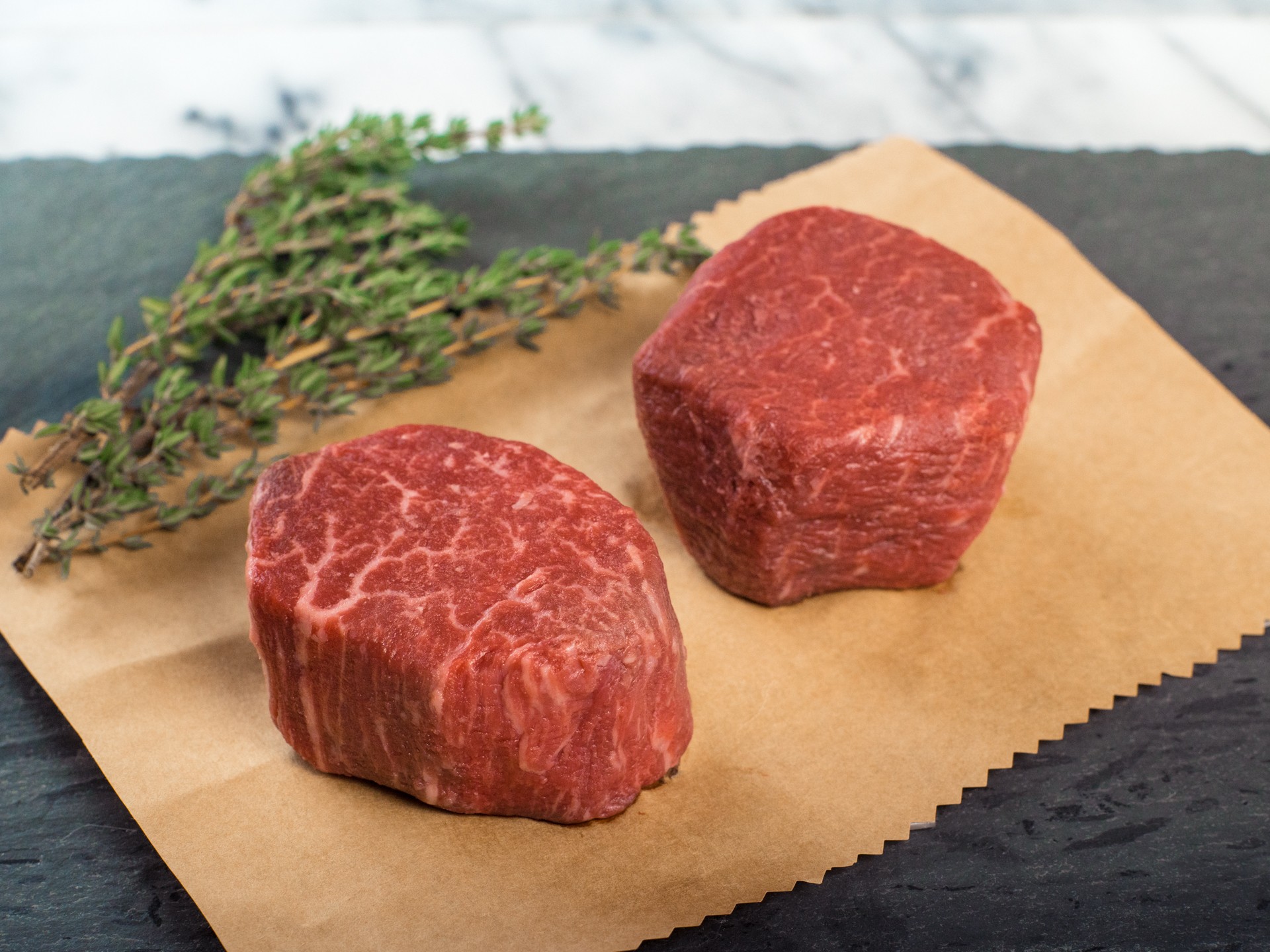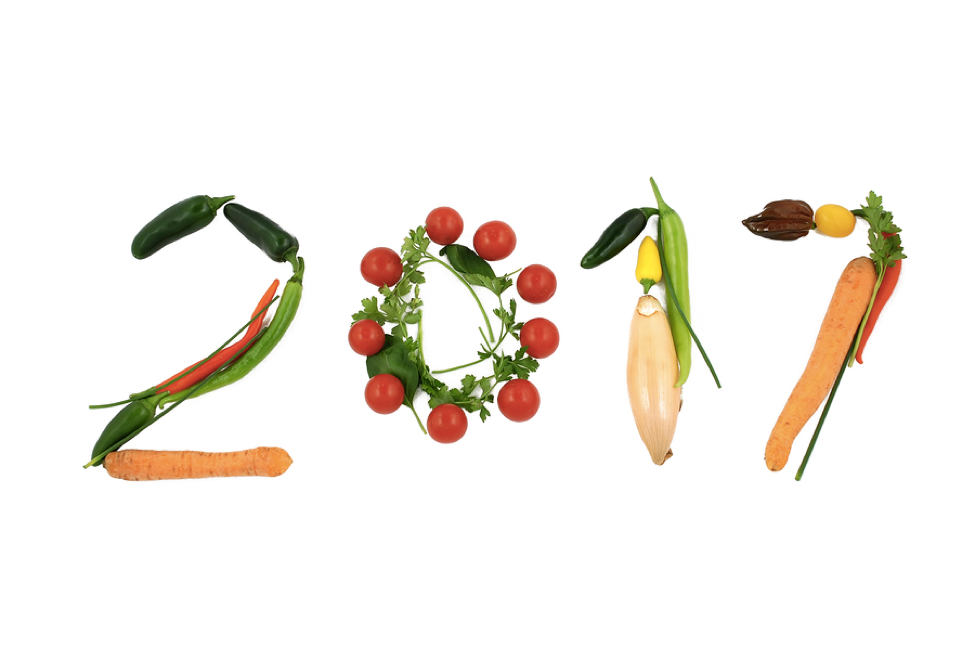Pascal, Lou, & Danielle talk about solutions to the industry problem of food waste, and we chat with Chef Cory Oppold and Jabari Corbin from Atlas Bistro.
Topics:

Pascal, Lou, & Danielle talk about solutions to the industry problem of food waste, and we chat with Chef Cory Oppold and Jabari Corbin from Atlas Bistro.
Topics:

You have beef on your mind; either chicken and pork aren’t cutting it or you’ve had salad for the past five days. Regardless, you need to dig your teeth into some scrumptious steak or a bountiful burger before you turn into a walking vegetable. So, you head to the nearest restaurant, browse the menu, notice the words “Kobe” and “beef” together, make your order, and bite your teeth into it. You’re content knowing that you’ve selected some of the best beef around. However, you’re eating a lie – actual beef, but a lie nonetheless.
Most likely you’ll be eating a strain of beef called “Wagyu.” Wagyu, loosely translated, means “Japanese cattle” and can refer to any cow that is bred in Japan or the Japanese-style. The difference between Wagyu beef and regular beef comes down to selection, care, feeding, and the obsessive, extraordinary efforts of Wagyu breeders.
Wagyu beef is striking because its high degree of marbling (high amounts of intramuscular fat) adds an extraordinary depth of flavor making it one of the most tender and succulent types of beef one can find. Not only is it a gastronomic delight, but Wagyu beef offers higher counts of mono-unsaturated to saturated fat ratios and a fatty acid called conjugated linoleic acid (CLA).

Regular beef (left) and Wagyu beef (right). Note the differences in fat streaks.
So what’s Kobe beef? Well, there is no official strain of beef titled “Kobe.” That beef is actually called “Tajima-Gyu” that is raised to strict standards in the prefecture of Hyogo (whose capital city is Kobe). Kobe beef is so selective that cattle must meet the following seven standards upon slaughter to meet the following requirements:
Given these standards, only 3,000 head of cattle qualify as truly authentic Kobe cows- everything else is simply lesser. With this in mind, producers sell Kobe beef at exorbitant, reasonable prices. That doesn’t stop shady restaurants, grocery stores, and wholesalers from selling simple Wagyu – or even non-Wagyu – cuts of beef as Kobe beef. Nonetheless, you can gauge whether or not the beef is legitimately Kobe by price: if an advertised burger costs $20, it’s most likely standard Wagyu; if a burger costs $50, then it’s safe to assume that it has quality Kobe.
Overall, the relationship between Wagyu beef and Kobe beef is the same as steaks and ribeye – every piece of Kobe beef is Wagyu, but not every piece of Wagyu beef is Kobe. So keep this knowledge in mind if you happen to come across real, unfiltered Kobe beef.
Sources:
https://www.mychicagosteak.com/steak-university/2016/05/10/wagyu-kobe-beef-difference/
https://www.debragga.com/p/about-our-meats/what-is-wagyu-beef/
http://www.buedelmeatup.com/2012/12/04/the-difference-between-kobe-and-wagyu-beef/

Whether you’re a coffee connoisseur or a tea expert, you’ll most likely be consuming one such caffeinated beverage in order to get through the day (assuming you don’t start the day with soda or energy drinks). Either way, once you treat yourself to a hot beverage, you’ll be counting away the seconds to finally brave the scalding liquid. As it turns out, letting your drink cool for an extra minute or two might be a life-saving routine.
A panel of global experts have determined that drinking coffee or tea above 149ºF may lead to increased chances of cancer of the esophagus (the eighth most prominent cancer worldwide). When drinking liquids at this temperature, coffee and tea scald down the throat and pave way for potential tumors. This discovery classifies hot drinks as the same risk-group as other exposures to cancer such as lead, gasoline, and exhaust fumes; people who consumed coffee or tea less than two minutes after pouring themselves a cup are five times more likely to develop cancers than if they waited four or more minutes. Cancers of the esophagus kill more than 500,000 people worldwide with the bulk of deaths stemming from Asia, Africa, and South America.
Luckily, it isn’t the drink that causes cancer – only the temperature. Drinks consumed at lukewarm or cold temperatures were not classified as carcinogenic. In fact, only 10-30% of cancers occur naturally in people’s bodies. This suggests that most cancers actually originate from environmental factors like secondhand tobacco smoke or UV rays from the sun. However, that’s not to say that all foods are cancer-free; specifically, processed meats, such as sausages and ham, were found to have carcinogenic nutrients.
So does this mean we should just up and quit coffee and tea consumption altogether? If anything, this research should lead drinkers to perfect the art of savoring their beverage rather than gulping it down like a frat boy on formal. If anything, we should look back at the old Goldilocks fable: not too hot, not too cold, but just right.
Sources:
Kahn, Michael. “Very Hot Tea May Cause Throat Cancer.” ABC – Australian Broadcasting Corporation, ABC, 26 Mar. 2009, www.abc.net.au/science/articles/2009/03/27/2527642.htm.
Senthilingam, Meera. “Very Hot Drinks Are ‘Probably Carcinogenic’.” CNN, Cable News Network, 15 June 2016, www.cnn.com/2016/06/15/health/coffee-tea-hot-drinks- cancer-risk/index.html.

2017 has come and gone like monsoon season. While our eyes and ears have been focused primarily on national, world, or political news (fake or otherwise), there have been a multitude of sweeping changes across the food industry. Here are six of the biggest food trends that we’ve seen in the past year.

Okay, maybe not “cool” but it certainly is popular. The blander sibling of broccoli packs a boat-load of nutrients, making it incredibly versatile in recipes. Chefs are foregoing the traditional steam or boiled versions of cauliflower and instead choose to deep-fry, roast, sautée, mash, and butter the cruciferous vegetable. Cauliflower now takes the form of steaks, rice, soups, casserole, and more. The demand for this veggie stems from carbo-adverse eaters’ desire for a healthy alternative to white rice and gluten-filled grains. This new trend may be part of a larger movement where chefs aim to make vegetables the centerpiece of meals.

Considered by many to be the source of the next big economic boom, legalized marijuana has slowly creeped up across the country. Currently with eight states that now offer the legal sale and possession of marijuana, the topic of the sticky plant has never been more covered and controversial. One of the most popular methods of ingesting pot is through the form of edible, bite-sized refreshments; companies and chefs are working to improve the taste and experience of edible marijuana snacks. Don’t expect anything nutritious as most of these ganja goodies take the form of sugary confections with CBD gummies and chocolates skyrocketing in popularity.
NOTE: Classic Cooking Academy does not support the edible consumption of marijuana.

Whether it’s French fries, onion rings, or fried zucchini sticks, you’ll most likely be dipping your finger food of choice into a certain sauce. Yet, one dipping sauce claimed the condiment crown this year as the most overhyped fast food menu item: McDonald’s Szechuan Dipping Sauce. Originally released in 1998 for Disney’s Mulan promotions, this teriyaki-flavored dipping sauce gained momentous traction after being mentioned in the immensely popular cartoon Rick and Morty. For a limited time only, Mickey-Ds brought back the sauce on October 7th. Man-children formed lines, cops kept the peace, and riots nearly broke out as cartoon enthusiasts demanded – rather vehemently – to be served the sauce.

In terms of diets, there has been a major shift from those who have adopted the previously popular paleo diet (involving the consumption of foods that were only available during the Paleolithic era) to the new and upcoming ketogenic diet. The ketogenic diet – or “keto” for short – involves drastically reducing your carbohydrate intake and replacing it with fat. The main idea of the keto diet is to limit the amount of glucose in the body as much as possible in order to create a fat-burning machine. With health benefits such as weight loss, controlled blood sugar, higher mental focus, increased energy, and reduced acne, the keto diet has found popularity amongst fitness nuts and Silicon Valley biohackers. Like many other diets, keto boasts a difficult one-to-two week adjustment phase known as the “keto flu.”

If 2016 had rainbow-colored bagels, then 2017 had activated charcoal. Used both as a hygienic and nutritional product, activated charcoal gives off a deep, black hue to foods ranging from ice cream, breads, and even lemonade. As a potent detoxifier, activated charcoal has been used in hospitals to prevent poisons and lethal overdoses of drugs from being absorbed by the body. Though these properties make it good at adsorption (soaking up all the molecules in its path), activated charcoal is actually pretty bad at picking out what’s toxic and what isn’t. For example, if you eat activated charcoal in ice cream, the charcoal would suck up the calcium, potassium, and other vitamins, preventing your stomach lining from absorbing those nutrients and instead discarding them as waste alongside the charcoal.

Finally – finally – America is starting to come around on what truly causes many of our health issues. Not only is it a leading cause of obesity but according to Gary Taubes’ best-seller The Case Against Sugar, the sweet-tasting carbohydrate may also have a central role in Alzheimer’s, heart disease, and many common cancers. Even though global sugar consumption of sugar is up, US consumption has faltered, supported by companies who have dialed down the sugar content in processed foods, evidenced by major soda brands introducing sugarless sodas like Coca-Cola Zero Sugar (the new substitute for Coke Zero). However, there’s always a tradeoff: the lower the sugar content, the higher the faux sweetener content which may lead to side effects such as upset stomachs, blood sugar control issues, and increased risk of some types of cancer.